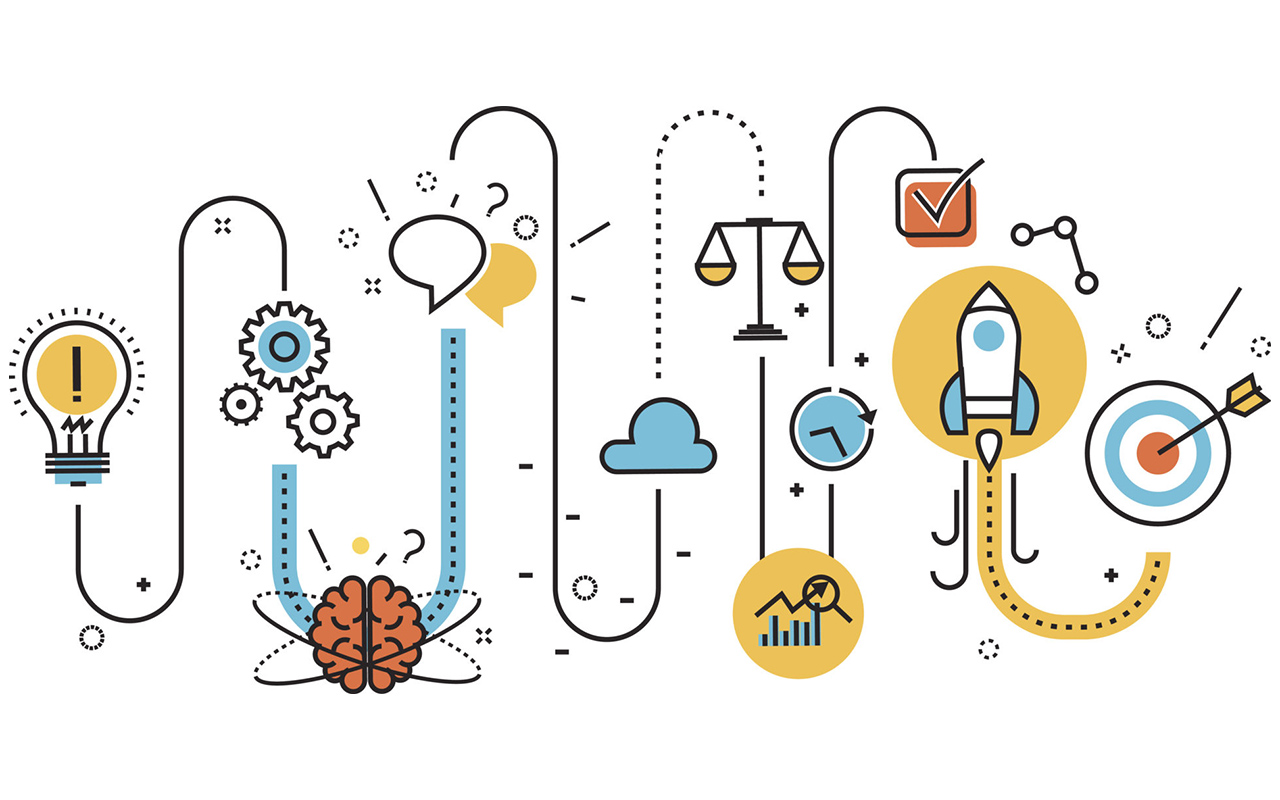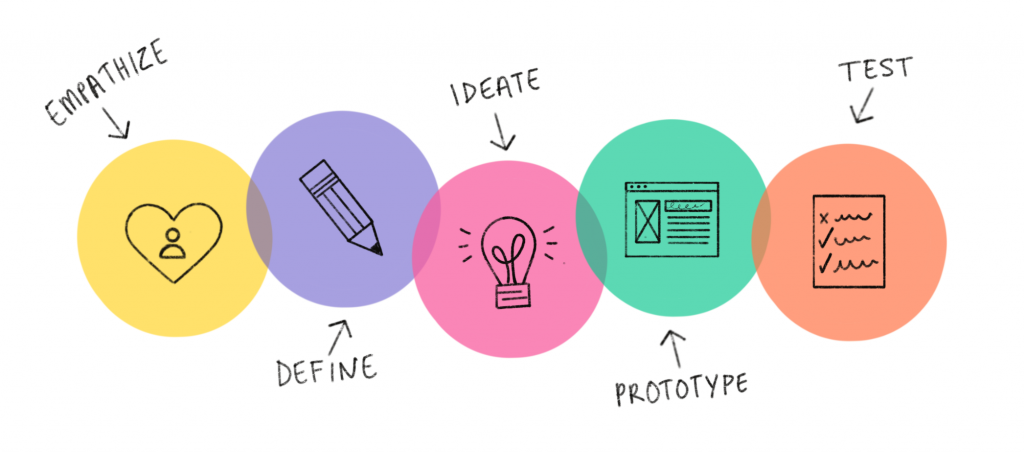
The Design Thinking is a working methodology that has become increasingly popular in recent years due to its user-centered approach and its ability to generate innovative and creative solutions.
Below, we explain the phases of Design Thinking and give you an example of a logistics company that can use it to design a mobile application that allows customers to track their shipments in real time.
What are the phases of Design Thinking?
As every process has its phases and Design Thinking was not going to be less. So here we go:
Phase 1: Empathize
Every company must know and understand the needs, desires, limitations and expectations of the end user.
Therefore, empathy is key to design effective solutions, since it allows identifying the real problems that users face on a daily basis.
This requires field research and interviews with users, observing their behaviors and experiences, and putting yourself in their shoes to understand their perspectives and needs.
In the case of the logistics company, the application development team can use techniques such as observation and interviewing to understand the needs and desires of customers in terms of tracking their shipments.
Phase 2: Problem definition
In this phase, the information obtained in the previous phase is used to establish a clear and specific definition of the problem in order to generate effective ideas in the next phase. The objectives to be achieved with the proposed solution are also defined.
For our example, one of the purposes may be to reduce the time it takes for customers to obtain information about their shipments.
Phase 3: Ideation
The problem has been defined, so it's time to start thinking of solutions. Don't set limits, since the wider the range of ideas, the more creative, innovative and effective the solutions will be.
To achieve this, you can employ different creative thinking techniques, such as brainstorming or mindmapping.
In the case of the logistics company, one of the ideas would be to create a real-time shipment tracking system through a mobile application for customers.
Phase 4: Prototyping
In this stage, a tangible version of the ideas generated in the previous phase is created.
This version is known as a prototype and can be a drawing, a paper model or a software design, which makes it possible to visualize the idea in a more concrete way.
This is done with the intention of getting early feedback from users to know which solutions are the most effective.
In our example, a mockup or simulation of the mobile application could be designed to get customer feedback and make improvements.
Phase 5: Testing
Now is the time to test the prototypes with users in order to validate or reject the proposed solutions, to iterate and improve.
In the case of the logistics company, usability testing of the mobile application can be done with a group of customers to validate the prototype developed in the previous phase.
In fact, the feedback obtained is used to iterate and improve the solutions.
Phase 6: Implementation
Once the solutions have been tested with users and improvements have been made, the final implementation begins.
In this phase, the team executes the solutions designed to solve the problem and improve the user experience.
Here it is key that the team is committed to the implementation and ensures that the objectives established in the definition phase are respected.
In the case of the example, once the improvements have been implemented in the mobile application and we have ensured that the essential functionalities are working well, the application is released to the general public.
You can see that each phase has a specific objective and different techniques are used to achieve it.
We hope this explanation has helped you to better understand how Design Thinking works.
If you have any questions or need help to apply this methodology in your business, do not hesitate to contact us. We are here to help you solve any problem you may have using effective technological solutions focused on your customers' needs.



